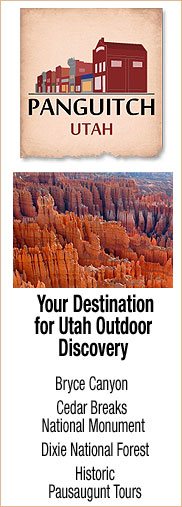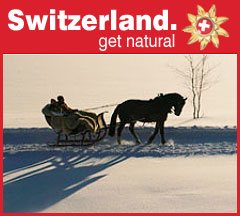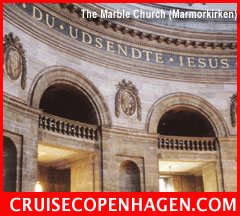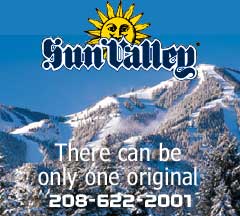 |
 |
|
 |

|
Visiting
New Hampshire
In Winter Story and Photos by Corinna Lothar
Most Americans know New Hampshire for its first-in-the-nation presidential primary every four years, when the candidates joust for early advantage in their quest for the presidential nominations of their parties. Concord is the capital, but Manchester is the largest city. The size of the New England states puts nearly everything within an easy drive. New Hampshire has lots of open space, of forests of maple trees that yield sugar sap in the early spring and give way to an easy, lazy summer and a blaze of color in the autumn. There are lakes for boating and fishing, mountains for climbing and skiing, villages for antiquing. The landscape is dotted with graceful 18th and 19th century houses, usually painted as white as the snow, and the steeples and towers of the Congregational church meeting houses poke through the tops of the elms and oaks in nearly every town and village. New England, someone once said, looks exactly like visitors want it to look. When the sap begins to rise, maple farmers get going. The season is short, usually from the last part of February through March, the length depending on the weather. For the sap to run best, cold nights – preferably with temperatures in the 20s – and afternoon temperatures between 40 and 50 degrees are ideal.
Maple syrup is native to North America, an edible that for once was not brought over by European settlers. Explorer journals from the early 17th century mention the Indian process of making maple sugar. Between 40 and 50 gallons of sap are required to make a gallon of syrup. The colorless sap is 97.5 percent water, 2.4 percent sugar and 0.1 percent mineral. The color and flavor of the syrup are determined by the freshness of the sap and the time and temperature it’s boiled.
Forty-three gallons of sap with a sugar content of 2 percent are required to make one gallon of syrup; 42 gallons of water boil off as steam (which makes a steamy, sweet sugar shack a bit of pure heaven in the high season). The process is relatively simple: the sap is drawn into a large tank from which it is piped into the evaporator, there to be boiled down. It’s then filtered into the familiar glaze for pancakes. Maple syrup is graded by color, flavor and clarity. There’s no difference in quality between grades A and B. The grade and color are determined by the amount of boiling time, which in turn is determined by the content of the sap itself. Grade A is made from early season sap when the sugar content is highest, requiring the least amount of boiling to obtain density. It’s lighter in color and in flavor than grade B syrup, which is both dark in color and more robust in flavor. Grade B is made at the end of the season when the sap has a low sugar content. It can take as many as 75 to 100 gallons of sap to make one gallon of Grade B syrup. Maple cream is a byproduct of the refining process; it contains no cream but makes a creamy perfection as a spread for toast. It’s made by heating light amber maple syrup to a prescribed temperature, then rapidly cooling and stirring until it is creamy.
In the woods above East Concord, Dean Wilber is getting ready for the Maple Festival weekend, March 19, when his Mapletree Farm will be open for visitors to watch the making of syrup and maple cream. Mr. Wilber has been making maple syrup since he was 7 years old, helping on his grandfather’s farm. He’s not a farmer, but can’t resist making the syrup each year.
Mapletree Farm produces about 200 gallons in a good year. Thirty years ago, Mr. Wilber planted sugar maple seedlings so there will be trees for the next generation; these trees have just started to yield sap. The Mapletree sugarhouse, sometimes called a sugar shack or saphouse, is pristine with shiny steel tanks and trays. Mr. Wilber and his wife, Meg, patiently explain the sugaring process and the new machines they recently purchased to increase yield. Mr. Wilber points out the different hues of the finished product, shows the stacks of hardwood used to heat the boiler and demonstrates how the pipelines and buckets are attached to the trees, and how the sap makes its way into holding tanks. During the short season, the sugarhouse is open for tours, but the Wilbers welcome guests all year round. Be sure to call first. The Maple Festival runs from 10 a.m. to 4 p.m. on Saturday, March 19, when visitors can learn about the process; sample syrup, maple cream, maple candy and maple covered nuts; examine such old-time artifacts as wooden sap buckets, a large wooden sap gathering tank, an English tin filter can, antique sap spouts, old syrup jugs and tins, and maple candy molds. The Wilbers sell their products either directly from the farm or by mail-order all over the world. Near the small town of Warner, Robert Bower and Jennifer Ohler’s Kearsarge Gore Farm is a different kind of farm. The Bowers are organic farmers and make their living not only with the maple syrup from their 1,500 or so trees, but also from the fruits, vegetables and lambs they sell at the farmers’ market in Warner in all but the winter months.
Although still small, their operation is slightly larger than Mapletree, as their annual output is about 250 gallons, which they sell at the farmers’ market in Warner. The Kearsarge Gore Farm saphouse is tucked into the trees; it makes a more rustic, less formal appearance. Although the Bowers’ farm is not open to the general public per se, visitors are welcomed by the Bowers and their young dog Charlie, a small terrier (who doesn’t know he’s small) with a big bark who will be counted on to keep the coyotes away from the lambs. He must learn not to follow the coyotes into the deep woods, however, lest he become a coyote’s breakfast or lunch. The village of Warner has great charm, enhanced by graceful old houses, some dating from the late 18th century. There’s an Indian museum with a collection of baskets, canoes, beadwork and other artifacts, and a telephone museum featuring displays of antique telephones and telephone equipment, including a replica of Alexander Graham Bell’s first telephone. “Downtown” Warner includes a first-rate bookshop and a couple of attractive small shops. A few miles from Warner, in Bradford, three country inns offer special activities for the Currier & Ives Maple Sugar Weekend on March 18 to 20. The two-night package at the Rosewood Country Inn, the Candlelite Inn and Henniker House includes a mapped, self-guided tour of neighboring sugarhouses and a progressive dinner with hors d’oeuvres at the Henniker House overlooking the Contoocook River, entrees served fireside at the Rosewood Country Inn, and dessert at the Candlelite Inn. Guests can complete the day of touring with a sleigh ride across the river and into the woods. The sleigh rides are available into spring, weather permitting. If visitors to the area get hungry during a day of touring, there’s the Everyday Café in Contoocook (pronounced “Kentuckuck”) where two young “immigrants” from New Orleans prepare delicious breakfasts and lunches. This year they decorated the café with Mardi Gras beads and regalia, unexpected “lagniappe” – as they call “a little something extra” in Louisiana. The café is next door to a shop where all sorts of old-time treasures can be unearthed. Concord began as a trading post dating back to 1660. The locale gained notoriety at the end of the 17th century when Hannah Dustin was abducted by Penacook Indians in a raid on Haverhill, Mass., and escaped by scalping her sleeping captors. Main Street retains many late 19th and early 20th century buildings, with a good selection of restaurants, including an Egyptian one, a well-stocked bookshop connected to a Viennese pastry shop. The town celebrates several festivals throughout the year, such as a fall pumpkin festival and a newly inaugurated spring green tradition festival. The city is home to the McAuliffe-Shepard Discovery Center, said to be New England’s largest air and space museum. Alan Shepard, the first American astronaut in space, was born just a few miles down the road at East Derry. Driving south from Concord to Manchester, a visitor marvels at the block upon block of contiguous red brick buildings along the Merrimack River. The mile-long rank of onetime textile mills that covered more than 8 million square feet produced some 5 million yards of cloth each week to be shipped from the mills, which thrived from 1830 to 1920. Today, the mills are used for other industries, for offices, and for a few restaurants.
Mill No. 3 has been converted into a small museum. The Millyard Museum offers visitors the opportunity to glimpse into the life of the millworkers at the Amoskeag Millyard. It was not an easy life: the work was difficult and dangerous; children as young as nine worked fourteen hour days, six and a half days per week, with time off on Sunday mornings to go to church. Their lithe, little fingers were needed to work the intricate looms, and many little fingers were lost in the unforgiving machinery. The museum exhibits early native American tools, pottery and fishing techniques, as well as the history and development of the textile industry. Looms and samples of the cloth produced are part of a permanent exhibit entitled “Woven in Time – 11,000 years at Amoskeag Falls.” There’s a section devoted to General John Stark (the American Revolution general who uttered New Hampshire’s motto, “Live free or die”) who grew up in what is now Manchester, and a delightful reconstruction of Manchester’s main Elm Street as it appeared on Thursday nights, payday for the mill workers. Special exhibits are held in the State Theatre Gallery. Since this year marks the 10th anniversary of the museum, a special Birthday Party will be held from 10 a.m. to 4 p.m. on Saturday, April 9th. The day’s program will include a living history presentation entitled “Meet the Reveres: Paul & Rachel Revere Ride Again.” Actors portraying the Reveres will recall episodes in their lives during and after the Revolution, with the audience invited to ask questions after the talk, scheduled for 1: 30 p.m. The museum is an excellent and educational treat for children. Manchester’s principal museum is the Currier Museum of Art, housed in an elegant beaux-arts building. The museum has a fine collection of European and American art, representing major artists from around the world, and a collection of American furniture. The collection is not large, but each painting and object is first rate, be it a Marisol wooden family group or the exquisite Childe Hassam “Goldfish Window.” There’s a lovely exhibit of American and French 19th century glass paperweights. The Currier also offers temporary exhibits. Coming up
later in March is a retrospective of native son Jon Brooks, famous for
his imaginative, poetic and often whimsical sculpture and furniture.
The Brooks exhibit, “A Collaboration with Nature,” will run
from March 19 to June 12 and will include more than 40 of Brooks’
key pieces from the late 1960s to the present.
The Currier operates the Zimmerman House, one of Frank Lloyd Wright’s Usonian houses – houses designed with cost in mind, without attics, basements and limited ornamentation. The house was built in 1950 for Isadore and Lucille Zimmerman and contains original built-in and free-standing furniture, textiles and landscaping, as designed by Wright. It’s the only residence designed by Wright in New England that's open to the public. The house is open from April to December. Manchester’s Palace Theatre, built in 1915 and known for its fine acoustics, has been restored and is now the New Hampshire Performing Arts Center, home of the New Hampshire Symphony and the Opera League of New Hampshire. Manchester airport is the gateway to the southern part of the state, and Concord lies only 25 miles north. There’s a lot of early American history in the area; the mountains, the bit of seacoast, the small towns and villages are not far away. In the warmer months, the Cantebury Shaker Village, a few miles north of Concord, is open for visits. The Village has 25 restored original buildings, the oldest dating to 1792 when the Village was established. South of Manchester, near Derry, lies the Robert Frost Farm where the poet lived from 1900 to 1911; the restored turn of the century house is open to the public in the summer.
Maple syrup is a sweet treat the year round, even if syrup-making is winter’s work. In early autumn, New Hampshire’s apple orchards become a tourist lure. Whatever the season, New Hampshire is delightful. Henniker House Bed & Breakfast Related Articles: |
I found a Mich Goss J. Grassmayr Innsbruck bell with Jesus,
a crucifix and a flower on it. Do you have any information about it you can
share with me? Many thanks. I don't have any information on that specific bell. If she wants information, "Liz" in San Bernardino should contact the factory. Here is the information: Address Grassmayr Foundry and Bell Museum, Leopoldstrasse 53, Inssbruck, A-6010 Austria. Telephone: 43 512-59416-0. Fax: 43 512-59416-22. E-mail: johannes@grassmayr.at or info@grassmayr.at. Corinna
Been there -- thought I'd done it -- you proved me wrong. Great travel coverage -- even for those who have lived there. --- Bill, Redmond, Oregon
Corinna, my dear, What a wonderful series of words you have collected together to paint a mesmerizing story about one of my favorite places. Even though I've traversed these same locales as you many times, your delightful descriptions made me want to book a flight this very second and see again some of the places that time did not allow me to linger in before. Your photos are also riveting, and I loved the pantyhose one - what a clever, sexy way to promote that article of the female form. Your colorful words make the entire region literally come alive before my eyes - a rare gift for any writer! Bravo and again Congrats on your top notch feature. Best regards. Best regards,
Hello Corinna, This is very roundabout ... I was recently teaching (Legal Reasoning) in Kabul and encountered Ann Geracimos, who said she knows you from the Times. She recently provided me with an electronic version of your 2007 piece about returning to Frankfurt (which I enjoyed very much). Jonelle and I are well (and enjoying our 3 grandchildren, who live within blocks of our house). I hope you are well. I will now look for your travel writing regularly. Best regards,
What an amazing background Ms. Lothar has! I enjoyed her article
very much. I found it to be quite intriguing, especially the interpreter school
bit.
I loved your article on Metz. I was an exchange student living there from 1981-1982 and have always felt like Lorraine was the most overlooked part of Europe. You really captured the feel of the city with your photo and articles.
|
![]()
Stay tuned.
This site is designed and maintained by WYNK Marketing. Send all technical issues to: support@wynkmarketing.com








































